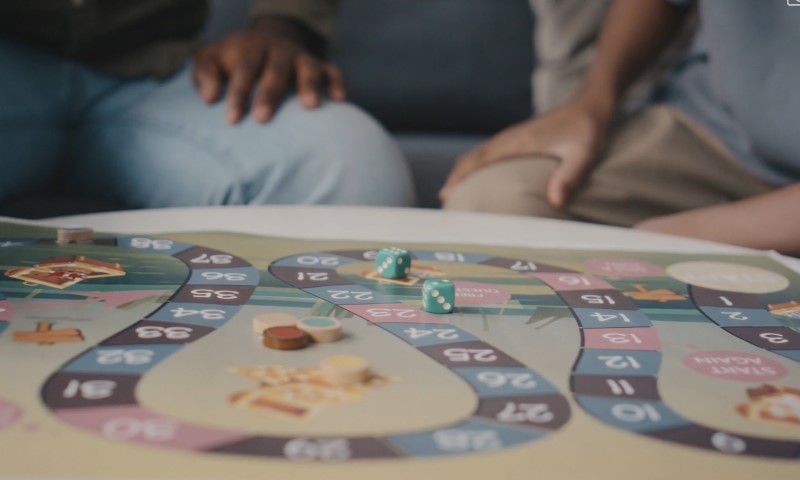Board games hold a special kind of importance in campus life. They fit easily into any room with a table, they’re cheap enough for any student budget, and, most importantly, they push people to talk, negotiate, and make decisions together.
In a space where clubs and study groups depend on communication and shared goals, that’s gold. Research backs it up, too: studies have shown that tabletop games consistently show measurable gains in collaboration, empathy, communication, and critical thinking in education settings.
If you’re organizing a campus club or study group and want to make your meetings more connected and productive, board games are your secret weapon. The evidence is there, the tools are accessible, and the payoffs go far beyond entertainment. Let’s get into the details.
The Effect of Games In Team Building on Campus

Board games make team building feel natural. They turn social interaction, problem-solving, and communication into shared play, helping campus groups bond and work better together.
Social and Emotional Benefits
Studies on tabletop play repeatedly highlight improvements in social and emotional skills. During play, students share plans, read cues, and resolve disagreements, exactly the kind of skills that club members need to function as a team. I experienced the whole process firsthand during my studies and enjoyed it thoroughly.
Board game sessions naturally push players to:
- Share their thought process out loud
- Negotiate priorities without a moderator
- Read tone, humor, and body language
- Work through small conflicts without escalation
Games built on hidden information, like social deduction games, train people to handle trust and uncertainty.
When a game includes deception or partial knowledge, it forces players to judge reliability, manage suspicion, and even rebuild trust after a misstep. It’s a low-risk practice for handling real-world group tension.
For shy or anxious students, board games lower the pressure of socializing. The clear structure gives everyone a defined role and task, which reduces awkwardness and creates a shared focus.
This is the structure that helps participants connect without needing to push through forced conversation.
Collaboration and Teamwork Skills
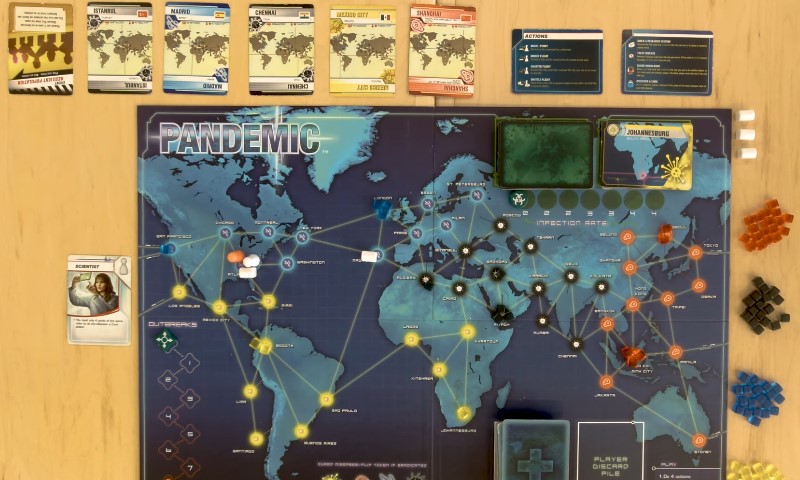
A systematic review on games and teamwork found that cooperative board games are particularly effective at strengthening group coordination, communication, and mutual support. Those formats make players share information openly and make collective decisions.
When students play Pandemic , for example, they’re not just flipping cards (although that is what they do, essentially). They’re learning to allocate resources, coordinate roles, and make decisions under pressure.
Researchers studying Pandemic as a model for teamwork noted that players demonstrated the same core components seen in effective real-world teams: planning, monitoring progress, and adapting when strategies failed.
In study groups or clubs, that kind of shared experience builds habits that carry into real meetings.
Engagement and Learning
Higher education research into game-based learning shows that board games don’t just improve mood, but they can also deepen learning.
Courses that integrate tabletop modules report higher engagement, participation, and retention of content compared with lectures alone.
Some findings that matter most for clubs and study sessions:
- Students are more active and collaborative during board game activities
- Gameplay that requires applying knowledge leads to better content recall
- Table-based play encourages balanced participation
For study groups, the payoff is clear: you get both knowledge retention and stronger social ties in the same hour.
Criteria for Choosing Board Games for Campus Groups
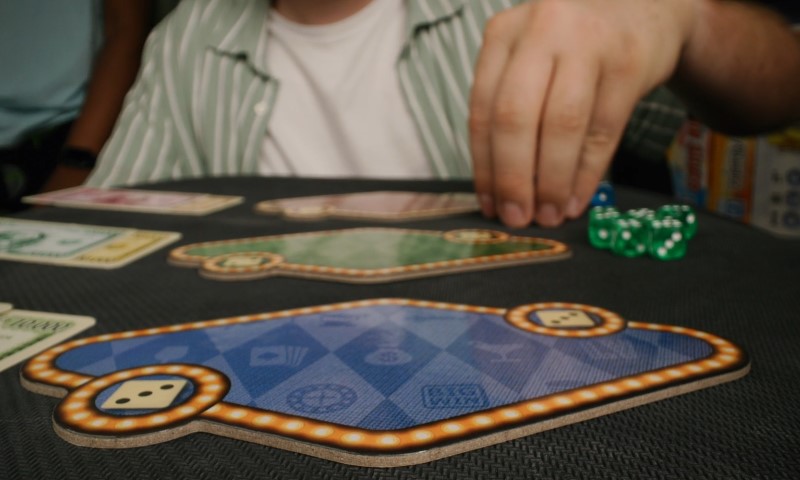
Not every board game fits a club environment. Some require too much setup, some don’t scale beyond four players, and others demand complex rules that eat up half a meeting.
Some can be just straight-up boring for some players. With that said, picking the right titles makes all the difference.
Here’s what to look for:
| Factor | Why It Matters on Campus | Practical Target |
| Player count | Clubs often have 8–20 attendees | Works for 4–8+ players or supports team play |
| Learning time | Meeting blocks are short | Rules teachable in 5–10 minutes |
| Play time | Need time for play and discussion | 30–60 minutes per round |
| Interaction style | Goal is teamwork, not solo puzzles | Requires table talk and shared decisions |
| Complexity | Mixed skill levels and gaming backgrounds | Light to medium complexity |
| Portability/setup | Rooms and storage often change | Compact, quick setup under 5 minutes |
Main Categories of Team-Building Board Games
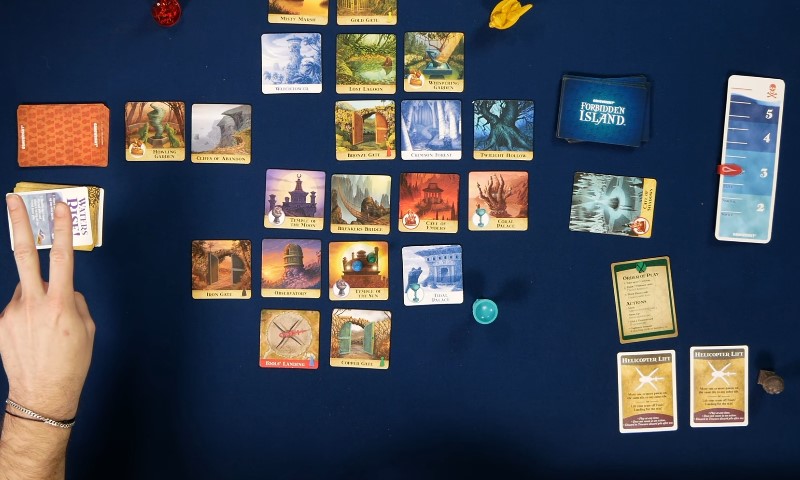
Campus groups benefit from different game styles, each building distinct skills. The main categories below will show you just how various board games foster teamwork, communication, and connection.
Cooperative Strategy Games
Cooperative board games put everyone on the same side against a shared challenge. They require real-time discussion, joint planning, and resource management. Those same skills define effective study and project teams.
Examples:
- Pandemic – Each player takes a specialist role trying to stop disease outbreaks around the world. It’s a model for collective planning and risk management.
- Forbidden Island / Forbidden Desert – Simpler cousins of Pandemic with quicker playtime, great for mixed experience levels.
- Flash Point: Fire Rescue – Players act as firefighters coordinating rescues under time pressure.
- The Crew – A card-based space mission where limited communication forces disciplined teamwork.
- Dungeons and Dragons (DnD) – A cooperative role-playing game that enforces strategic planning, problem-solving, cooperation, and critical thinking.
Students in cooperative game studies reported more awareness of teammates and stronger group identity than those in competitive sessions. The cooperative structure builds positive interdependence, which mirrors how successful study groups operate.
Word and Communication Games
Word and clue-based games sharpen communication and perspective-taking without much setup. They teach players to express ideas concisely and interpret others’ reasoning.
Examples:
- Codenames – Two teams race to guess words on a grid based on single-word clues from a “spymaster.” It rewards creativity and shared mental models.
- Just One – Players write one-word clues to help a teammate guess a hidden word, but identical clues cancel each other out, forcing unique thinking.
- Decrypto – Players send coded messages their teammates must decipher without revealing too much to the other team.
- Wavelength – Teams interpret where an abstract concept lands on a hidden scale, encouraging debate and perspective-sharing.
Language research notes that these kinds of games encourage nuanced reasoning and improve group communication patterns, especially when participants rotate roles.
Social Deduction and Trust-Oriented Games
Hidden-role games are built around deception, logic, and persuasion. When used carefully, they help players learn about trust, intent, and social dynamics. They’re best for established groups comfortable with friendly tension.
Examples:
- The Resistance / The Resistance: Avalon – Players must complete missions while traitors secretly work against them. It’s widely used in clubs for logic, memory, and discussion practice.
- One Night Ultimate Werewolf – Fast, chaotic, and hilarious, perfect for testing quick judgment and communication.
- Secret Hitler – Political-theme game focusing on reading motives and negotiating alliances.
Psychology research into trust games shows that hidden-information mechanics promote skills like intent recognition and conflict recovery, vital for club committees and leadership teams. The key is maintaining emotional safety and keeping sessions friendly.
Lightweight Party and Icebreaker Games
Sometimes the goal is simply connection. Light games with minimal rules help strangers feel comfortable, making them perfect for first meetings or relaxed study breaks.
Examples:
- Sushi Go Party! – Fast drafting game where players build meal combos while chatting about strategy and luck.
- Telestrations – Drawing and guessing game that often turns into shared laughter and inside jokes.
- Dixit – Players use storytelling and imagination to describe dreamlike art cards, improving empathy and creative communication.
Simple, humorous games build rapport, and regular play contributes to belonging and emotional regulation. They work best as the first layer before moving into deeper collaborative sessions.
Tabletop Role-Playing and Storytelling Games
For tighter-knit groups, tabletop role-playing games (TTRPGs) like Dungeons & Dragons or Fiasco provide structured storytelling and problem-solving. Sessions often unfold across multiple weeks, helping players practice leadership, empathy, and creativity.
A review of TTRPGs in psychology found benefits ranging from improved social confidence to reduced stress. For campus clubs focused on writing, drama, or leadership, such games create shared narratives that build genuine community.
Examples
Campus clubs and classrooms have already proven how well board games work as social glue and learning tools, turning casual play into structured collaboration.
Board Game Clubs as Skill Labs
Many universities already use board games as informal learning tools. The Avalon Board Game Club at Ohio State University describes its mission as combining entertainment with logical deduction and strategic reasoning.
They run weekly sessions that attract hundreds of students; proof that a regular play structure can double as a social and educational hub.
Other campus groups adopt similar patterns: weekly or biweekly meetings, rotating games, and low barriers to entry. The goal is consistency and inclusivity, not competition.
Academic Courses Using Board Games
Some professors integrate board games directly into coursework. Examples include:
- Architecture history modules where students designed games about historical styles, leading to higher engagement and collaboration.
- Science courses that use educational games to simulate biological or environmental processes, improving conceptual retention.
- Student-designed games for topics like vaccine development or trade routes, using game mechanics to reinforce complex systems.
Once students associate games with learning, it becomes natural to use the same approach in study groups or club settings.
Cooperative Games as Reflection Tools
Cooperative titles like The Mind or Pandemic serve as structured exercises for reflecting on teamwork. After play, groups can discuss:
- Who took on leadership or coordination roles
- How decisions were made under stress
- What communication habits emerged naturally
- How trust developed or faltered
Those insights transfer directly to academic teamwork and project collaboration.
How Effective Game Sessions Run on Campus

Running game sessions well takes more than picking the right title. The setup, teaching style, and structure decide whether players just pass the time or actually build teamwork and connection.
Match the Game to the Goal
Each session should have a simple purpose.
- Cooperative games : practice joint planning and problem solving
- Word games : enhance clarity and communication
- Social deduction : explore perception and trust
- Educational games : review academic material
When the mechanics match the objective, players subconsciously rehearse the behaviors the group wants to strengthen.
Keep Teaching Time Short
Nothing kills energy faster than a 30-minute rules lecture. Effective facilitators demonstrate rules with a short example and get the first round going within 10 minutes.
Patterns that work:
- One facilitator already familiar with the rules
- “Play a few open hands” demonstration
- Learning by doing rather than reading the rulebook aloud
Encourage Inclusive Participation
Face-to-face seating, turn-taking, and clear structure increase engagement, especially for quieter members. Larger clubs should split into multiple tables so everyone stays involved.
Strategies for inclusion:
- Rotate key roles like clue-giver or team leader
- Keep group sizes manageable
- Ensure rules promote equal participation
Research on cooperative and multi-touch tabletop games supports that setup for engagement and social learning.
Finish with a Quick Debrief
A five-minute reflection solidifies lessons and self-awareness. Ask the group to identify what worked, what didn’t, and how behaviors at the table mirror real collaboration patterns.
Sample Game Lineups for Campus Use
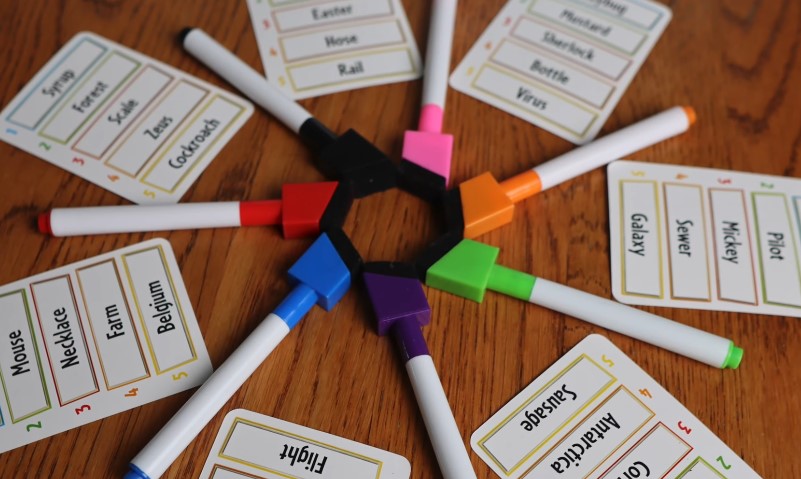
Different groups have different goals, so choosing the right lineup matters. Here are sample setups that fit common campus scenarios.
1. New Club Icebreaker Session
Goal: reduce social anxiety and build initial rapport.
Ideal games: light, fast, and laughter-driven.
| Game | Why It Works | Time |
| Codenames | Encourages shared guessing and discussion | 30–45 min |
| Just One | Cooperative, quick rotation, inclusive | 20–30 min |
| Telestrations | Humor-driven and zero pressure | 30–45 min |
2. Study Group Review Night

Goal: reinforce learning while keeping morale up.
Approaches:
- Adapt a quiz or trivia format to match course material.
- Use movement or card draws to determine which question gets answered.
- If subject-appropriate, pick existing educational games (biology, economics, etc.).
| Method | Benefit | Notes |
| Modified trivia board | Quick integration with notes | Great for midterm prep |
| Subject-themed cooperative game | Blends fun with review | Best for STEM or history |
| DIY review game | Reinforces both content and creativity | Low cost |
3. Leadership Retreat or Committee Coordination
Goal: strengthen shared decision-making and communication under pressure.
| Game | Core Skill | Duration |
| Pandemic | Coordinated planning and prioritization | 45–60 min |
| The Crew | Precision communication and adaptation | 30–45 min |
| Captain Sonar | Real-time team coordination | 30–60 min |
These games encourage leaders to delegate, synchronize, and manage resources collaboratively, exactly what student committees need.
Practical Tips for Organizers
@jenwoodhouse All the broken, torn, and mismatched board game boxes were making me crazy so I found a better solution! https://amzn.to/3Q6iONW #jenwoodhouse #organizedhome #organize #gameroom #boardgames
- Store games in portable boxes : clubs often move between rooms, so compact storage helps.
- Keep a short reference sheet : a one-page rule summary speeds up teaching.
- Encourage repeat sessions : familiarity builds efficiency and stronger group identity.
- Budget smartly : secondhand or print-and-play games are easy on student funds.
Most importantly, remember that the goal is connection and communication. Laughter, mistakes, and debates all count as success.
Methodology
- I reviewed over a dozen peer-reviewed studies on game-based learning and teamwork from journals like Simulation & Gaming and Teaching in Higher Education to establish how board games affect collaboration, communication, and retention.
- I cross-checked findings with university case studies where board games were integrated into coursework or club settings, focusing on reproducible patterns of engagement and measurable learning outcomes.
- To balance theory and practice, I compared cooperative, competitive, and hybrid board game formats, highlighting which mechanics (hidden information, shared resources, time pressure) drive specific social and cognitive outcomes.
- I analyzed multiple campus board game club structures, such as Ohio State’s Avalon Board Game Club, to extract realistic organizational models for sessions, participation, and inclusivity.
- I verified all example games through official rulebooks and academic references to ensure accurate representation of gameplay, player count, and skill relevance.
- I synthesized the criteria for game selection (player count, learning curve, play time, interaction style, complexity, portability) based on practical constraints common to campus groups observed in educational reports.
- I included firsthand experience from facilitating and observing student board game sessions to ensure authenticity in describing group dynamics, social comfort, and debrief strategies.
- I prioritized educational outcomes that could be backed by both empirical research and classroom implementation data, communication improvement, empathy development, critical thinking, and retention of knowledge.
Summary
Board games aren’t just for downtime. On campus, they’re tools for developing the communication, empathy, and problem-solving skills that make any group stronger.
Studies across psychology, education, and teamwork research all point to the same result: shared tabletop play strengthens both relationships and learning.
When student organizers choose the right games, cooperative, interactive, and accessible, and run them with simple rules, short sessions, and quick reflections, the return is enormous. Clubs become closer. Study groups become more effective. And a table full of cards and laughter turns into one of the most productive hours of the week.

